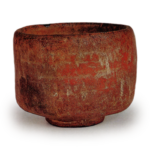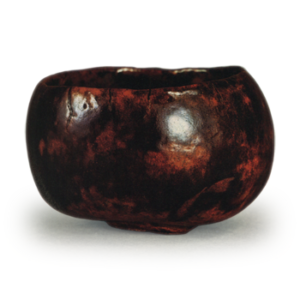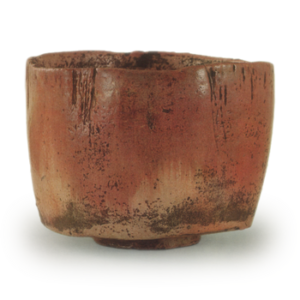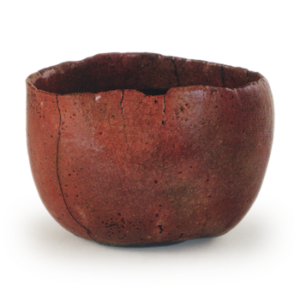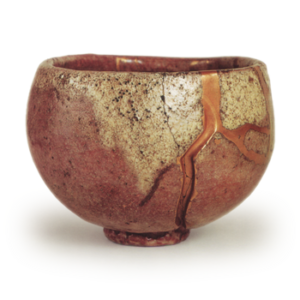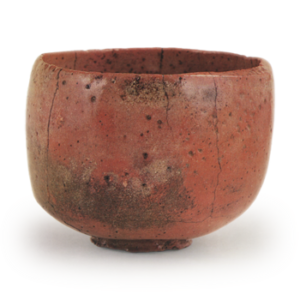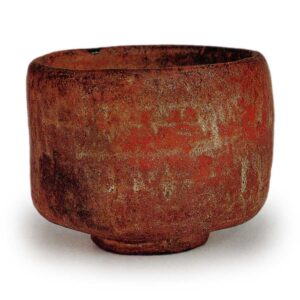
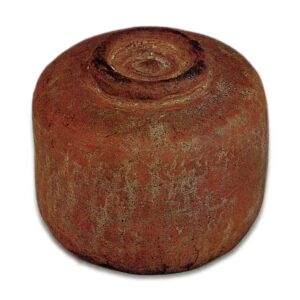
Height 8.3cm, mouth diameter 9.9-10.2cm, high stand diameter 5.1cm
The inscription “Chojiro Tea Bowl” on the right and “Red Tea Bowl” on the left on the front of the lid of the inner box is by Sotan Sen, and the inscription “Jirobo Chojiro ware Tea Bowl, Sosa (Hanaseki)” on the back of the lid is by Sosa Zuiryuusai. On the bottom of the box, there is an inscription of a poem “Hikiri shicha no kensoku no oritore ha sei ni hana taka no Jirobo to”, but the author of this poem is unknown. It is assumed that it was in the possession of Sotan, but it is not known what happened to it after that, but it is said that it came into the possession of Hakusan Zengoro of the Osaka Konoike clan, and then to the possession of Murahiko, or Murahikohei, in Kanazawa, through Toda Rōgin. In the Rogin’s tool collection “Gogakushu,” there is an inscription “Jirobo Aka Hako Motohaku Soko Ni Kyouka Yubo Hako Kashu Muraji” (Jirobo is a village clan from Kashu, Japan). The inscription “Jirobo” may have been named in the sense of a brother to “Tarobo,” since there is a “Tarobo.
However, the workmanship differs from that of “Tarobo,” and this tea bowl is molded thickly. As already mentioned in the explanation of “Momohana-bo”, these two bowls are exactly the same workmanship, although there is a difference between red and black. It is a rather small tea bowl, made thick from the body to the waist, especially the waist is quite thick, and therefore, the handles are heavy compared to the size of the tea bowl. The mouth is held slightly inward, giving the body a plump and rounded appearance, but with one side slightly tightened. The inside of the bowl is tightened one step at the center of the body, and the bottom is deep, with a shallow tea bowl carved out in the center. The height is rounded, and the width of the spiral helmet is carved low within the height, with a shallow groove at the edge of the height. The yuzu (Japanese citron) over the entire body is strongly applied, as in “Muichimono” and other pieces, giving it a unique Chojiro-red surface. The yuzu is so thin that it is possible to see the marks left by the scraping.

